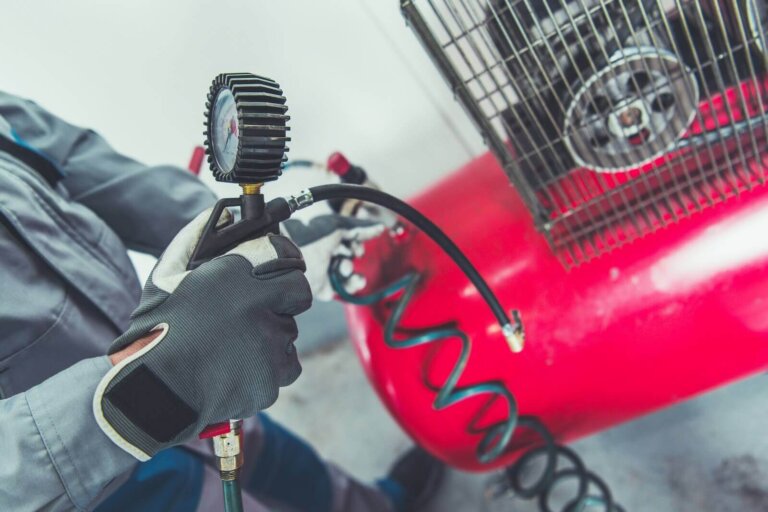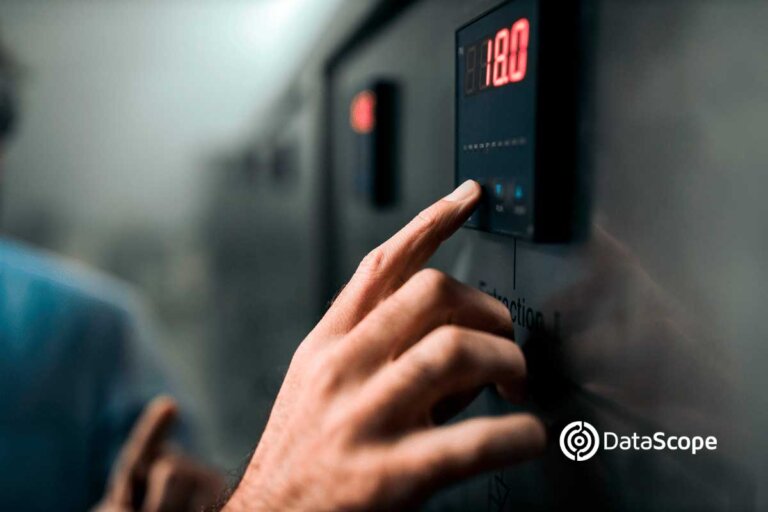Maintaining the operational continuity of a company is essential to solve its success in the market. Consequently, it is important to have tools that allow identifying, before they occur, those failures capable of paralyzing its machinery and stop its production.
Modern business success lies in providing agile and timely responses to increasingly dynamic and demanding markets. For this, it is essential that organizations maintain their operational continuity, based on their ability to predict and anticipate, in a timely manner, contingencies that condition.
One of the best strategies to implement proactively this vision is predictive maintenance, a very practical discipline structured around a series of tools and techniques designed to monitor the health of business assets. Applied accurately, recognize in time the wear indicators presented by the different components of the productive machinery, allowing the forecast of possible future failures.
In this way, it is possible to replace these components, just before they fail, thus avoiding losses derived from an unexpected stop in the operational continuity of the organization.
PREDICT IS BETTER THAN PREVENT
If we apply this concept to the entire context of the current Industry 4.0, we will understand that predictive maintenance operates from a deep analysis of production data, translating them into valuable patterns used to predict problems, before they occur.
Therefore, predictive action goes beyond the traditional “preventive” approach, which was only limited to the regular repair of machinery parts, according to a rigid and mechanized schedule. In the opinion of the experts, this concept does not guarantee efficiency, since it includes the repair or replacement of parts not always damaged or worn. All of which paradoxically translates into unnecessary consumption of resources and loss of productivity.
An action of this type is equivalent, for example, to giving scheduled sick leave to all workers in a company, because at some point “they may get sick or have an accident.” On the other hand, the correct predictive procedure would imply analyzing and considering, from the constant observation of daily work, the causes of accidents or occupational diseases in our staff, in order to anticipate and prevent them proactively.
Therefore, the need to operate beyond simple mechanized scheduling has made predictive maintenance one of the main operational strategies of Industry 4.0. Because makes possible a “healthy” monitoring of its assets.
At the same time, it has positioned itself as a key methodology to optimize programs and obtain alerts, in real time, of potential operational risks. Ultimately, this enables us to reduce service costs, maximize uptime and improve the overall performance of any organization.
APPLICATION STEPS
Implementing an adequate predictive maintenance program implies following a logical sequence of actions. First, you have to detect the problem. Then, it is necessary study it carefully, in order to find its root causes and, finally, correct the failures with maximum efficiency, and at the right time (not before or after).
This involves following three clearly stated steps:
1. Detection or recognition of the problem
It involves finding the fault or problem in the asset from a systematic and detailed study and observation process. To exemplify this, we can take as a reference the constant and rigorous monitoring of the vibration level in any machine.
Although the interval between measurements depends on the characteristics of each particular piece of equipment, and its importance for the entire production process (some machines needs more regularly checking process); a monitoring methodology must be drawn up to ensure the maximum level of detail, in order to recognize any variation or change that denotes a potential anomaly.
This implies measuring the level of vibrations at all those points where we can find a defect that affects the proper functioning of the whole machinery. For example, bearings, fans, gears or joints between shafts. At each of these points, we must consider values such as speed, acceleration or displacement, depending on the point studied and the characteristics of the machine.
In this context, efficient detection requires a data collector associated with a computer program, which stores all the data collected in the different routine reviews of factory assets.
Only in this way, will there be an effective analysis parameter, based on the historical record of the data obtained daily in the weak points of each machine studied. With this methodological basis, we can be certainly detect a problem at the precise moment when the number of vibrations increases or varies significantly.
2. Analysis: Finding the cause of the problem
Continuing with the same previous technical case, once the problem is found (in this case, the excessive increase in vibrations of a fragile point), we must identified and analyze in depth all its possible root causes. It is a complex study in itself, and its success depends, in each specific case, on the cross-analysis of complementary variables. These could be the point where the defect appears, added to the position and environment of the machine, among other options.
This could give us as a result, for example, an analysis of the type: “failure X was produced by the wear of a gasket, accelerated by the bad installation of some connectors that in turn were too close to an area with excessive vehicle traffic heavy load ”.
This type of conclusions shows that there are not always one unequivocally single cause for excess vibrations in machinery. Therefore it is necessary include on the analysis the experience, common sense and knowledge of each piece of equipment and equipment used. For this reason, at this point technology acquires a transcendent value as a support tool to carry out a better analysis of the situation, and contribute to the success of predictive maintenance.
3. Correction: Finding the moment and the way to solve the problem
Once the problem has been located and its causes analyzed, the necessary we must take the actions to solve it.
At the same time, it is necessary to find the most suitable moment to carry out the repair, trying to make it as efficient as possible, and to have a minimal impact on the production process.
For this purpose, the most convenient thing would be to take advantage of any briefly stoppage of the production process, or a situation where the workload of the machinery is less than usual.
MULTIPLE BENEFITS
The correct application of predictive maintenance provides, at the same time, various economic benefits both to the manufacturer of the machinery, as well as to the company that uses it and its customers.
Among these advantages, we can highlight the following:
– Reduction of maintenance time: Greater certainty and speed to detect failures and take the respective courses of action, allow reduction rates between 20 and 50% in maintenance periods. This, in turn, translates into a reduction of between 5 to 10% in the general costs of the process.
– Increased efficiency: The data obtained from the root cause analysis of a contingency improves the overall efficiency of the organization. For example, we can reduce unnecessary maintenance, extend the useful life of assets, and discover any failures before they affect productive infrastructure.
– Generate new sources of income: Machinery manufacturers have, in turn, the option of monetizing industrial predictive maintenance. It can be, for example, through digital services for their customers, based on continuous online data analysis. These can include predictive maintenance dashboards, optimized maintenance schedules, or support from technical personnel in the field, among other options.
– Greater customer satisfaction: Modern digital connection networks would allow send automated alerts when it is necessary to replace a critical part, or suggest timely maintenance services to the customers. This would increase the degree of satisfaction and provide a greater measure of predictability.
– New competitive advantages: Predictive maintenance reinforces the brand of a company and the value for its customers, allowing it to differentiate itself from its competition, and obtain a continuous benefit, for its better position in the market.
KEY FACTORS
An efficient predictive maintenance also requires balancing the budget, goals and available resources, with the priorities of each business, and the technical requirements necessary to carry it out successfully.
In this sense, we must follow three essential steps; in order to adapt them, appropriately, to the characteristics of each organization:
Step 1: What investments are most beneficial to develop a predictive maintenance program?
Focus efforts only on those vital assets that present the highest risk of failure. To make this decision, we must consider the level of critical importance of each of them. This implies practicing a “criticality analysis”, which qualifies the assets based on the risk they represent for the company in vital areas such as safety, production, environment, impact on the business and quality, among others.
For example, a banking Data Center is highly critical equipment and its failure would immediately interrupt the activity of whole company (generating high impact for the core business). In the other hand, a secondary generator set, which only operates as a backup has less immediate impact on the business, and can repaired in a bigger time mirror with less temporary pressure.
At the same time, we need proper understanding of “failure modes”. Without it, it is not possible accurately determine the type of predictive maintenance technology most appropriate to detect a problem, or to define the frequency with which a machine should be examined.
In this sense, the most appropriate strategy is to first apply the predictive maintenance program to the main assembly; that is, to the most critical 20% percent of equipment. Subsequently, and when the “health” of these first assets group has improved, we work with the next critical 20%; and so on, until at least 85% of the assets are covered.
Step 2: Establish the necessary budget to develop the predictive maintenance program
Putting a predictive maintenance program in place can be financially complex, especially during its early stages. For this reason, we must justify it from the obtaining of substantial profits that allow the realization of new continuous subsequent investments.
It is also necessary to overcome the emotionality often repeated in management decision-making, when applying predictive maintenance programs. Especially if the budget is limited. For example, if a machine fails, there is no need to rush to perform vibration analysis on the entire infrastructure. It will be more efficient to make rational decisions, according to the critical level of each asset, and its corresponding failure modes.
The ideal is to start with a mapping of the different failure modes and, based on them, determine which technologies available in the market will identify the highest number of critical episodes and what their respective values are. In this way, we can implement the actions that best balance the application costs, including material acquisition and personnel training.
Step 3: How must choose the most appropriate predictive technology?
To address this point, investments in technology must be oriented according to three basic criteria:
– Effectiveness of the technology, so that the predictive maintenance process is applied to assets of all kinds.
– Ease of implementation, so that the hardware, software, or techniques implemented have a wide degree of acceptance within the organization.
At this point, we must consider that there are no “better than others” technologies, but with different capacities. For example, a plant with a large number of motors must focus on vibration and thermography, while another, using gearboxes and drive shafts, will prefer to focus on oil flow analysis and thermography.
The important thing, in all these cases, is always consider both the nature of the assets, as well as their function and critical level. Based on this, it will be possible to choose the most appropriate tools for each specific activity, like vibration analysis, motor testing, or ultrasound. The key is to decide in accordance with what is most convenient and pertinent for the company, in terms of certainty and speed of diagnosis-action.
– Personnel training. This is a very relevant consideration, as some condition monitoring technologies can deployed relatively quickly, and with minimal levels of expense and training. On the other hand, others require significant investments, in equipment and personnel training.
At this point, the decision must balance, once again, the needs of the company, with its budget level and the differentiated criticality of its assets.







